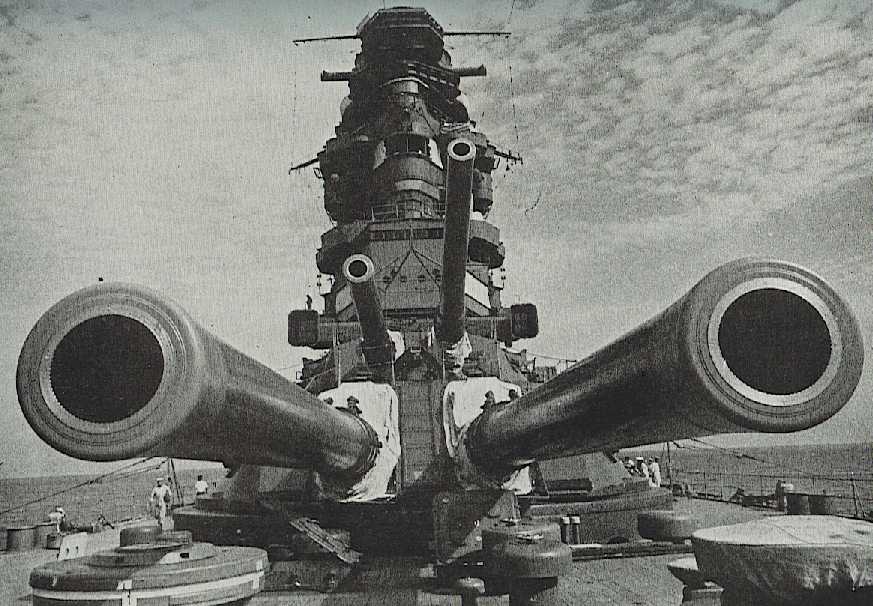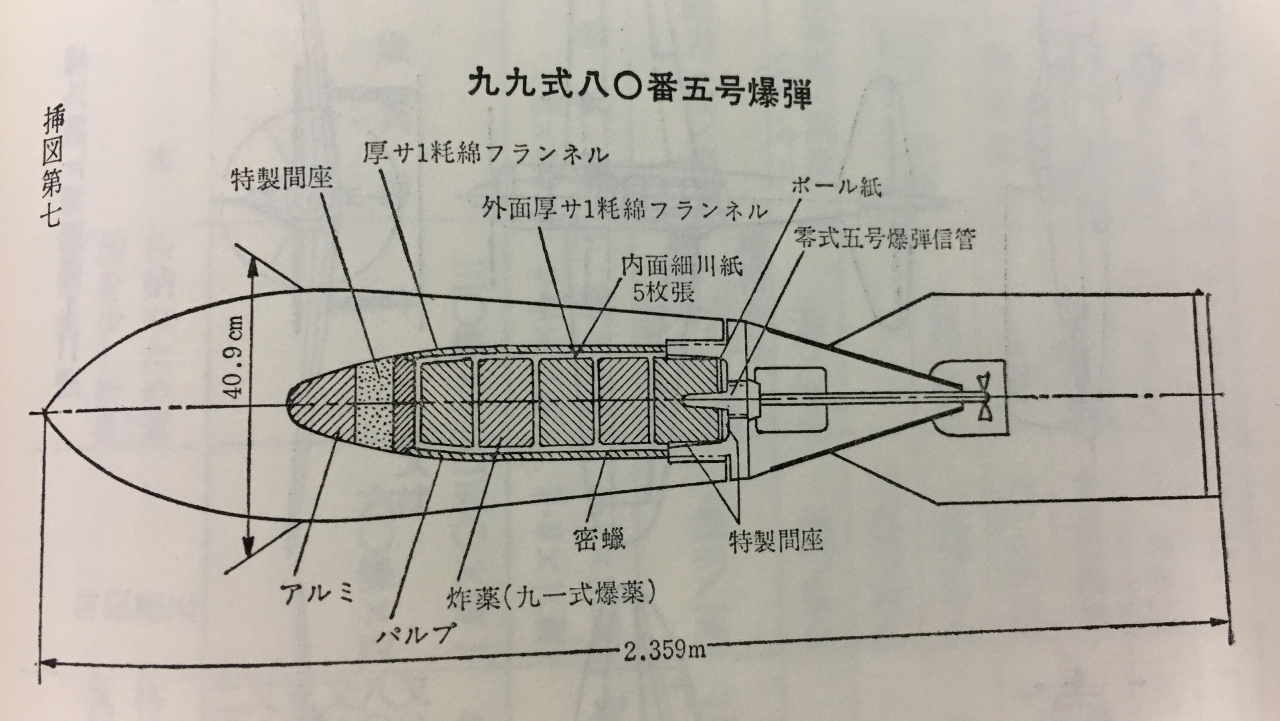These were the first large-caliber guns designed entirely in Japan. They were mounted afloat only on the Nagato class, but had been planned for use on the Kaga, Amagi and Kii classes of the early 1920s, all of which were canceled as a result of the Washington Naval Limitation Treaty. Those completed guns and mountings intended for the canceled ships were then used for the modernization of the Nagato class during their 1930s rebuilds and as coastal artillery, covering the southern entrance to the Sea of Japan. One of the old turrets removed from Mutsu was then installed as a static display at the Japanese Naval Academy at Etajima.
These guns were generally similar to British wire wound guns of the time but were of lighter construction, being about an inch (25 mm) less in diameter at the muzzle than the 15"/42 (38 cm) Mark I. This may indicate that they were not wire wound over their full length. Used a Welin screw breech but with an Elswick 3-motion short-arm mechanism, which resembled that used on the British 18"/40 (46 cm) guns of 1917. The breech block needed to be withdrawn straight back into the carrier before it could be swung. A total of about 40 guns were manufactured at the Kure and Muroran Ironworks.
Mutsu was destroyed by a main magazine explosion on 8 June 1943. The Japanese attempted to salvage the wreck both during and shortly after the war but it was not until 1970 that a successful effort was begun. Two guns recovered from Turret #3 are now displayed at the Yamato Museum in Kure and at the Museum of Maritime Science in Tokyo.
In the early 1930s Japan did a series of design studies for Treaty (35,000 ton) battleships armed with 40 cm guns. The Naval Treaty of 1930 extended the battleship building holiday and work on this design was halted soon afterwards. In 1934, the Japanese withdrew from the League of Nations and participation in the 1922 and 1930 Naval Treaties and pursued much larger warship designs resulting in the Yamato class battleships and their 46 cm guns.
Originally designated as 41 cm/45 3rd Year Type. Redesignated as 40 cm/45 3rd Year Type on 29 March 1922. Actual bore diameter was 41.0 cm (16.14 inch).
Some of the APC shells for these guns were converted into aircraft bombs and then designated as Type 99 (Model 1939) No 80 Mark 5. It is believed that one of these destroyed USS Arizona BB-39. In 1942 the design was modified and new bombs were then designated as Type 2 (Model 1942) No 80 Mark 5 Model 1.
| Designation | 41 cm/45 (16.1") 3rd Year Type (Model 1914)
40 cm/45 (16.1") 3rd Year Type (Model 1914) |
|---|---|
| Ship Class Used On | Nagato, Kaga, Amagi and Kii Classes |
| Date Of Design | 1914 |
| Date In Service | 1921 |
| Gun Weight | 100 tons (101.6 mt) |
| Gun Length oa | 741.7 in (18.840 m) |
| Bore Length | 720.24 in (18.394 m) |
| Rifling Length | 615.3 in (15.629 m) |
| Number Of Grooves | (84) 0.161 in deep x 0.345 in (4.1 mm x 8.754 mm) |
| Lands | 0.259 in (6.58 mm) |
| Twist | Uniform RH 1 in 28 |
| Chamber Volume | 28,505 in3 (467.11 dm3) |
| Rate Of Fire | 1.5 - 2.5 rounds per minute 1 2 |
- ^Firing cycle was 21.5 seconds at low elevations, which probably means at the loading angle of +3 degrees.
- ^The post-war US survey of Japanese Seacoast Artillery states that the coastal artillery turrets could fire 1 round per gun per minute.
- US Naval Technical Mission to Japan report O-54(N) states that guns meant to be loaded at high elevations had "ridges around the compression slope, to aid in gripping the projectile rotating bands and prevent the projectile from slipping back after seating."
| Type | Bag |
|---|---|
| Projectile Types and Weights 1a | Prior to World War II
APC Type 3: N/A, but probably 2,205 lbs. (1,000 kg) APC Type 5: 2,205 lbs. (1,000 kg) APC No. 6 / Type 88: 2,205 lbs. (1,000 kg) World War II
|
| Bursting Charge | APC Type 91: 32.8 lbs. (14.89 kg)
Common Type 0 HE: 97.7 lbs. (44.3 kg) Others: N/A |
| Projectile Length | APC Type 91: 68.4 in (173.85 cm)
Common Type 0 HE: 55.1 in (140 cm) Common Type 3 IS: 70 in (160 cm) Others: N/A |
| Propellant Charge 6a | 1920s - 1930s: 494 lbs. (224 kg)
World War II 7a |
| Muzzle Velocity | APC Type 3: N/A, but probably 2,592 fps (790 mps)
APC Type 5: 2,592 fps (790 mps) APC Type 6 / Type 88: 2,592 fps (790 mps) APC Type 91: 2,559 fps (780 mps) 8a |
| Working Pressure | 19 - 19.5 tons/in2 (3,000 - 3,070 kg/cm2) |
| Approximate Barrel Life | 250 - 300 rounds |
| Ammunition stowage per gun | About 90 rounds |
- ^The APC Type 3 was adopted in 1917. This was superseded by the APC Type 5 which was adopted on 15 June 1925 and was in turn superseded by the APC No. 6 which was adopted on 17 November 1928. APC No. 6 was essentially similar to the Type 5 in terms of armor penetration but was better protected from premature detonation and had enhanced underwater performance. APC No. 6 was redesignated as the Type 88 on 6 April 1931. On that same date, the improved APC Type 91 was adopted. By World War II, APC Type 5 was only used by the coastal artillery units. Dye was introduced in 1941 and Type 91 shells containing it were redesignated as Type 1.
- ^Type 91 shells were all 6/∞ crh with a boattail and two copper driving bands. The diameter of the bourrelet was 16.11 in (40.919 cm). AP Cap, cap head and windshield together weighed 358 lbs. (162.4 kg).
- ^Common Type 0 HE was supplied with time fuzes for AA defense. US Naval Technical Mission to Japan report O-19 says that this round had an effective radius of 54.9 yards (50 m) but this seems to be optimistic.
- ^IS is my abbreviation for the incendiary shrapnel round (sankaidan) intended for AA use. Fuzes were usually set on the waiting tray in the working chamber.
- ^The Shômeidan B1 Illumination round had an illuminating power of 5.3 million candelas. The maximum ballistic range was 24,900 yards (22,770 m).
- ^The propellant charge was in four bags. Bags had a single 8.8 oz (250 gm) black powder igniter patch.
- ^Different propellant weights were used in order to insure the same muzzle velocity. Powder grains for 110 C2 were 11.05D x 450L mm while those for 102 DC1 were 10.20D x 370L mm
- ^New gun muzzle velocity was about 16 fps (5 mps) higher than this figure.
- Dye was introduced in 1941 and Type 91 shells containing it were designated as Type 1. The following dye colors were assigned:
Nagato: Pink
Mutsu: Black
| Elevation | Range | Striking Velocity | Angle of Fall |
|---|---|---|---|
| 2.5 degrees | 5,470 yards (5,000 m) | 2,247 fps (685 mps) | 3.4 |
| 5.7 degrees | 10,940 yards (10,000 m) | 2,001 fps (610 mps) | 7.5 |
| 9.2 degrees | 16,400 yards (15,000 m) | 1,768 fps (539 mps) | 11.8 |
| 13.5 degrees | 21,870 yards (20,000 m) | 1,624 fps (495 mps) | 17.5 |
| 18.8 degrees | 27,340 yards (25,000 m) | 1,526 fps (465 mps) | 24.5 |
| 25.5 degrees | 32,810 yards (30,000 m) | 1,516 fps (462 mps) | 34.0 |
| 43.0 degrees
(max elevation of turret) |
42,350 yards (38,725 m) | --- | --- |
| Elevation | Range |
|---|---|
| 43.0 degrees | 33,930 yards (31,025 m) |
| Range | Side Armor | Deck Armor |
|---|---|---|
| 0 yards (0 m) | --- | --- |
| 21,872 yards (20,000 m) | 10.6" (269 mm) | --- |
| 32,808 yards (30,000 m) | 8.0" (203 mm) | --- |
This data is from "Battleships: Axis and Neutral Battleships in World War II" and is based upon the USN Empirical Armor Penetration Formula.
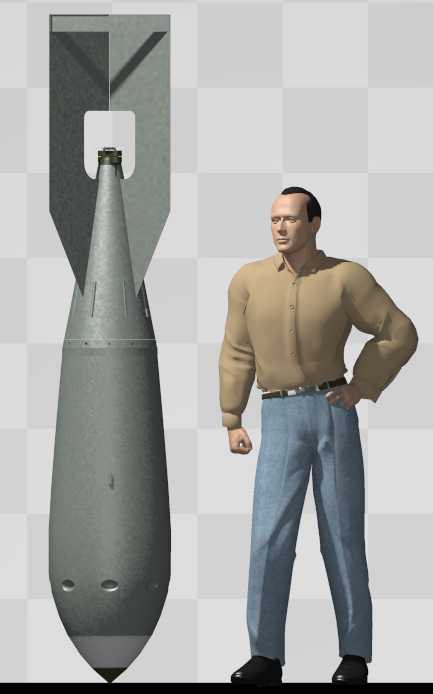
| Characteristic | Type 99 (Model 1939) No 80 Mark 5 | Type 2 (Model 1942) No 80 Mark 5 Model 1 |
|---|---|---|
| Total Weight | 1,757 lbs. (796.8 kg) | 1,788 lbs. (811.2 kg) |
| Bursting Charge | 49.4 lbs. (22.4 kg) TNA | 78.7 lbs. (35.7 kg) TNA |
| Length oa | 92.6 in (235.1 cm) | 91.7 in (233.0 cm) |
| Diameter | 16.1 in (40.9 cm) | 15.9 in (40.4 cm) |
| Nose thickness | 19.17 in (48.7 cm) | 11.97 in (30.4 cm) |
- These bombs were designed to penetrate the deck armor of the new USA Battleships of the 1930s-40s. From performance testing in January 1941, the bomb was considered to be able to penetrate 150 mm deck armor (5.9") from a dropping height of 8,200 feet (2,500 m) and an average striking speed of 738 fps (225 mps). At the time of the test, Japanese Industry lacked the technology to produce a deck armor plate with a performance close to that of USA plates, so 150 mm plates were imported from Germany and these were used to create an 82 ft2 (25 m2) target plate. Data from "Brief History of the Naval Air Squadron."
- An aluminum plug was used between the burster and the cap as a shock absorber.
- Both bomb types had two base fuzes to ensure detonation. However, these fuzes do not appear to have been reliable. During the Pearl Harbor attack, although one of these bombs is thought to have destroyed USS Arizona (BB-39), at least three did not explode. USS Tennessee (BB-43) was struck by two bombs, the first exploding on the center gun of Turret II and the second striking the top of Turret III but did not explode. Two dud bombs struck USS West Virginia (BB-48), the first of which hit the top of Turret III and broke up while the second went through the foretop and penetrated down to the second deck at frame 70. It was recovered nearly intact during salvage operations in May 1942.
| Designation | Two-gun Turrets
Original Design 1c: Nagato (4) New Design 2c: Kaga (5), Amagi (5) and Kii (5) |
|---|---|
| Weight | 1,004 tons (1,020 mt) |
| Elevation 2c | Original Design: -5 / +30 degrees
New Design: -3 / +35 degrees Nagato class as modernized: -3 / +43 degrees Coastal Defense turrets: -2 / +35 degrees |
| Rate of Elevation | 5 degrees per second |
| Train | about +/- 130 degrees 3c |
| Rate of Train | 3 degrees per second |
| Gun Recoil | N/A |
| Loading Angle 1c | As commissioned: -5 to +20 degrees
As rebuilt: +3 degrees |
- ^1.11.2The design of the original mounting was very similar to that for the British 15"/42 (38 cm) Mark I. For example, like the British gun, the rammers were mounted on a continuation of the slide and could theoretically ram at any angle of elevation. Difficulties with this method, probably similar to those found by the British, led to the newer mountings intended for the canceled ships having a fixed loading angle of +3 degrees. Turrets used sighting hoods, similar to those used on contemporary British designs. Mountings were powered from a hydraulic ring main. The training gear used a worm drive which was subject to wear problems. Shell rooms were above the magazines. When these turrets were removed during the 1930s rebuilds, Turret #4 from Mutsu was erected as a static display at the Naval Academy on Etajima. It is not clear what happened to the other seven turrets, but they appear to have been scrapped.
- ^2.12.2The turrets intended for the canceled ships had improved protection and were somewhat larger and roomier than the earlier ones used on the Nagato class. These turrets replaced the gunlayer's sighting hoods used on the earlier design with sighting ports on the sides of the turrets. This was consistent with British practice where their post-Jutland designs did away with hoods in favor of ports. The close relationship between the British and Japanese navies meant that the Japanese designers were well aware of this changeover and incorporated this knowledge into improving their own designs. During the modernization of the Nagato and Mutsu during the mid-1930s, the original eight turrets were removed and these ships were then rearmed with eight of the turrets originally intended for Kaga and Tosa. The maximum elevation of these later mountings was also increased to +43 degrees during the rebuilds by deepening the gun wells and lowering the revolving structure further down into the ships. The armor thickness on these turrets was increased as noted below. A double longitudinal bulkhead separated the two guns and also the working chamber. This consisted of two flashtight bulkheads spaced about 20 inches (50 cm) apart. A flashtight door in this bulkhead was the only access between the two sides of the turret. The working chamber where shells and charges were transferred from lower to upper hoists was similarly subdivided. This represented an improvement away from British turret designs which did not use flash walls to isolate the guns.
- ^These turret pairs were grouped close together, which limited their maximum train angle. Adm. Hiraga was trying to limit the overall length of the Nagato class and some compromises were made in order to achieve this goal. One of the compromises was that the turret spacings were less than ideal. As the concept of most nations’ battleship designs of the 1920s was that they would be used in some future Jutland battle, this was considered to be acceptable, as they would normally be firing close on the broadside and rarely at a large angle such as 150 degrees.
- The contracts for the turrets intended for the canceled ships were split between the Kure Arsenal and the Yokosuka Arsenal. The Kure Arsenal was contracted to build five mountings for Amagi, three for Akagi, three for Tosa and five for Kaga. The Yokosuka Arsenal was contracted to build two mountings for Akagi and two for Tosa. No orders were placed for the Kii class turrets prior to their cancellation in 1922. Out of the twenty turrets contracted, it appears that a total of fourteen were actually completed, with eight of these being used to rearm the Nagato class during mid-1930s modernization program. The remaining six were transferred to the Army. Four of these were modified with three being actually emplaced to guard the southern entrance of the Sea of Japan and the fourth held as a spare. The other two were not modified and were also held in reserve. The coast defense turrets were powered by individual oil hydraulic units rather than by a ring main as in the earlier turrets. The turret emplaced at the Toyo Battery on Tushima was originally Tosa Turret #1; the Choshito Battery at Busan, Korea was Tosa Turret #2; and the Kurosaki Battery on Ikishima was Akagi Turret #1. The US Naval Technical Mission to Japan report O-55(N) states that the Tsushima battery lacked adequate fire control and communications equipment. The post-war US survey of Japanese Seacoast Artillery states that the coastal artillery turrets could be theoretically loaded at any angle up to +15 degrees but in actuality the loading angle could not exceed +5 degrees.
- The US Naval Technical Mission to Japan report O-47(N)-1 states that "Japanese major caliber turrets (14 and 16-inch) are all of old design and were copied from the British-built turrets for the BB Kongo. In general arrangement and in most details, they are similar to the British 15-inch turrets, but some improvements have been made by the Japanese . . .[including] Better flash tightness in gunhouses and working chambers. All battleships were fitted with longitudinal flashtight bulkheads between the guns, and between the gun loading hoists in the working chambers. . . In the 16-inch turrets, the gunloading cages are designed to hold four one-quarter charges end to end, thus enabling a full charge to be rammed with a single stroke of the rammer."
- Run out was by compressed air. Gun elevation was by cylinder and piston attached to the rear of the slide. Each gun loaded from a cage which contained the shell and all four charges laid end to end in a flash tight compartment. This allowed the charges to be rammed in a single stroke.
- The gun axes were 96 in (244 cm) apart.
- Armor thickness of original turrets as given in "Nagato Details" by Sander Kindsepp:
Face: 11.7 in (29.9 cm)
Sides: 8.8 in (22.4 cm)
Rear: 7.4 in (18.7 cm)
Roof: 4.9 - 5.9 in (12.5 - 14.9 cm)
Floor: 3.9 in (10.0 cm)Armor thickness of Coastal Defense Turrets as given in "Survey of Japanese Seacoast Artillery, 1946" by US Army (this was probably the armor protection intended for the canceled ships):
Face: 12.0 in (30.5 cm)
Sides: 12.0 in (30.5 cm)
Roof: 4.0 in (10.2 cm)Armor thickness of new turrets used to rearm the Nagato class as given in "Naval Weapons of World War Two" by John Campbell:
Face: 18.1 in (46.0 cm)
Sides: 11.0 in (28.0 cm)
Rear: 7.5 in (19.0 cm)
Roof: 9.8 - 9.0 in (25.0 - 23.0 cm)
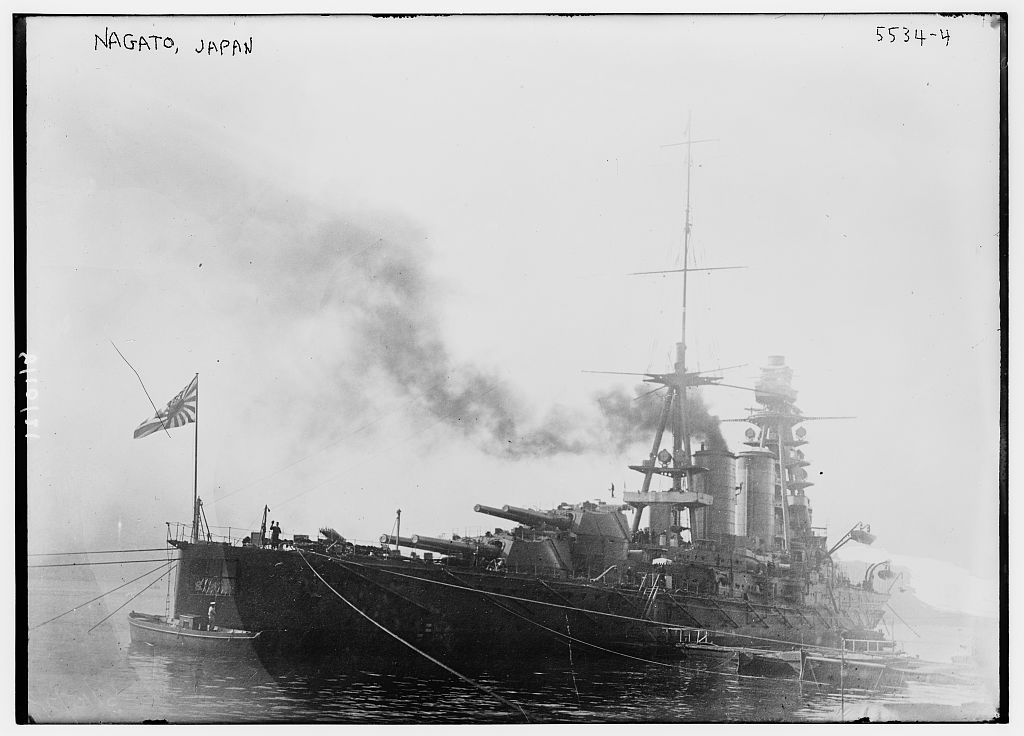
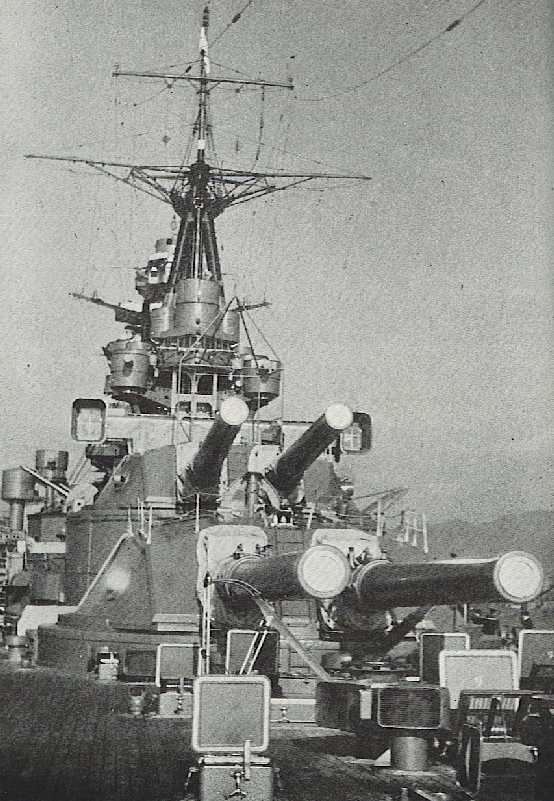
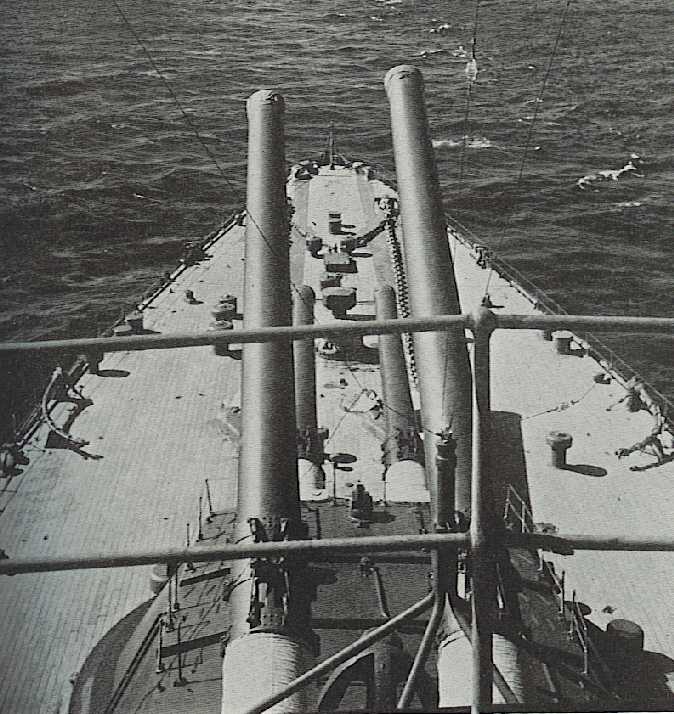
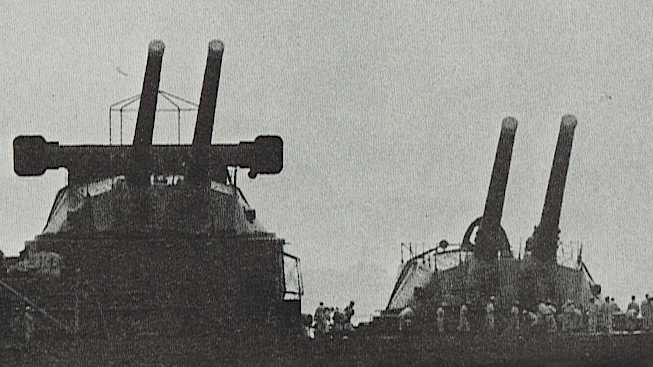
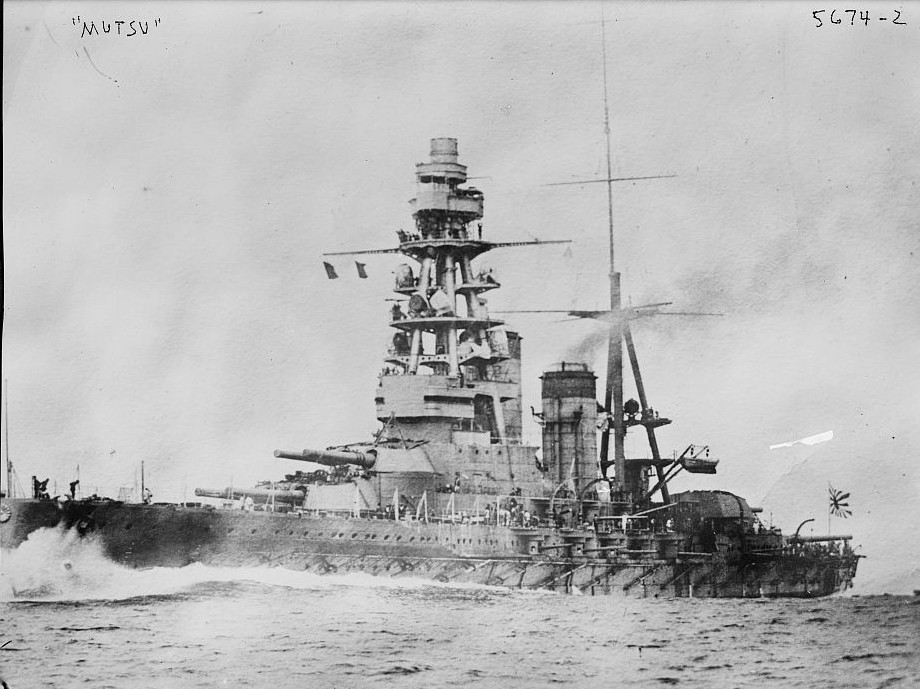
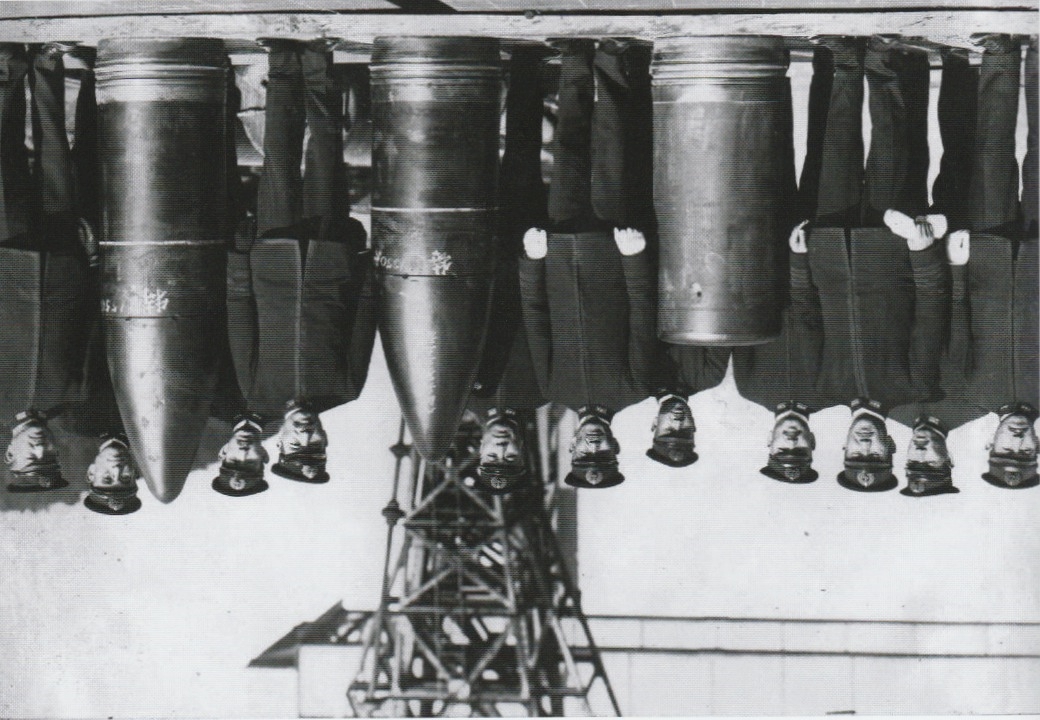
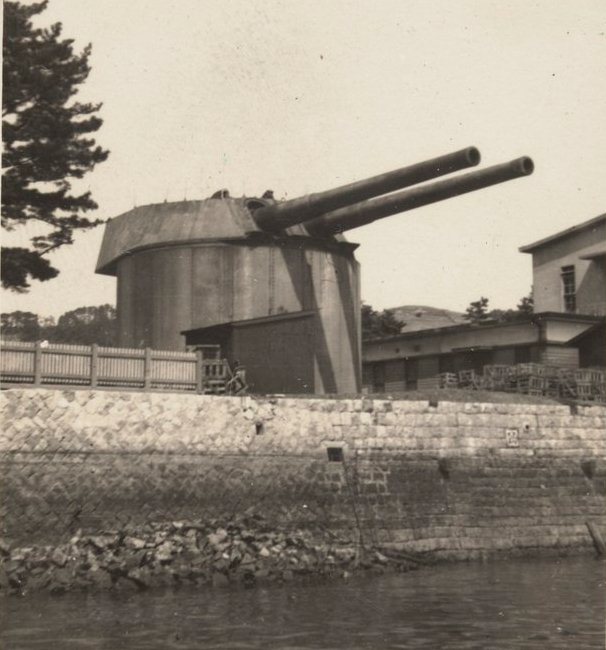
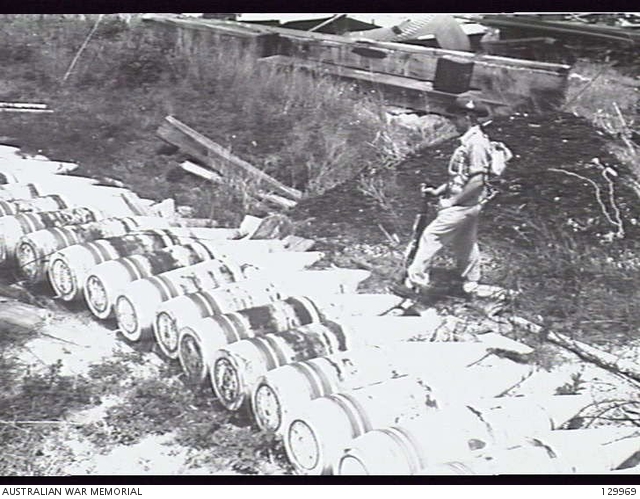
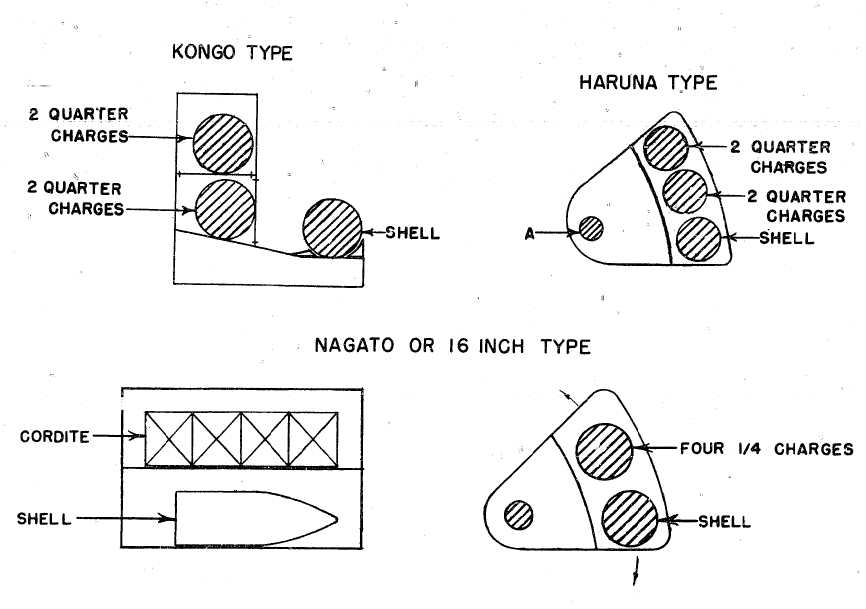
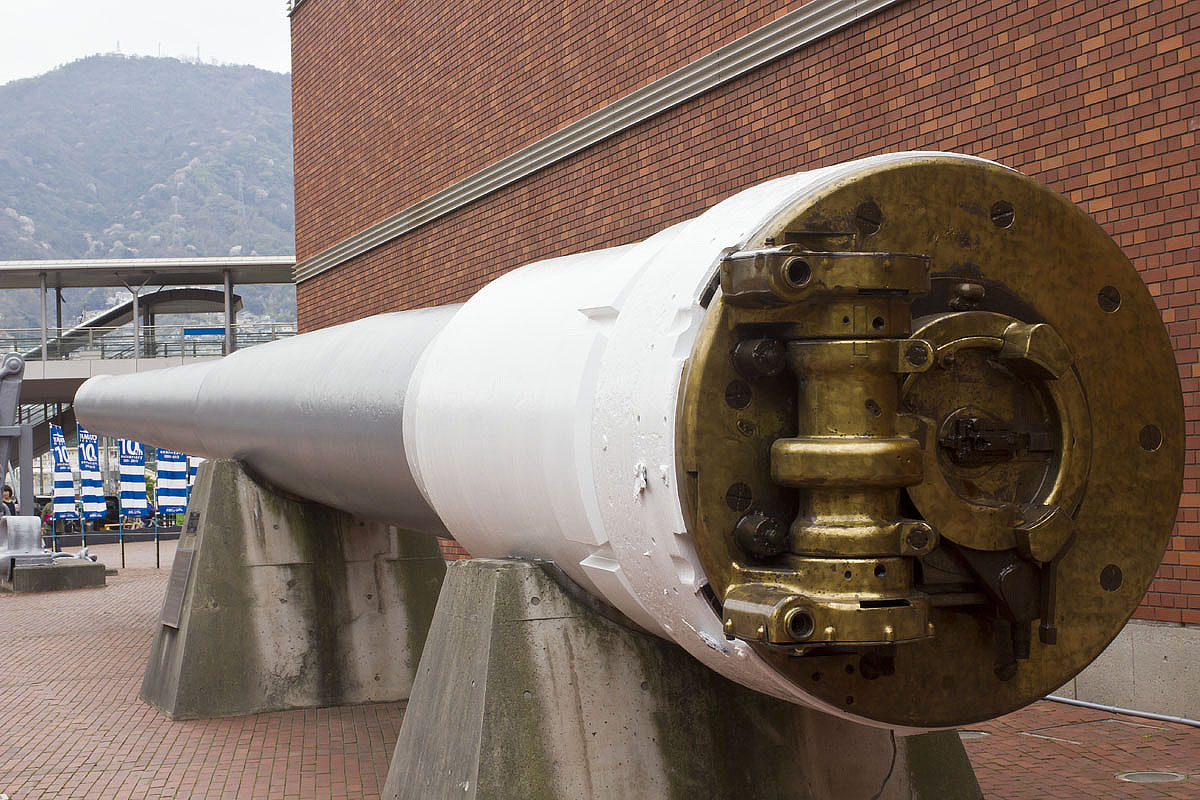
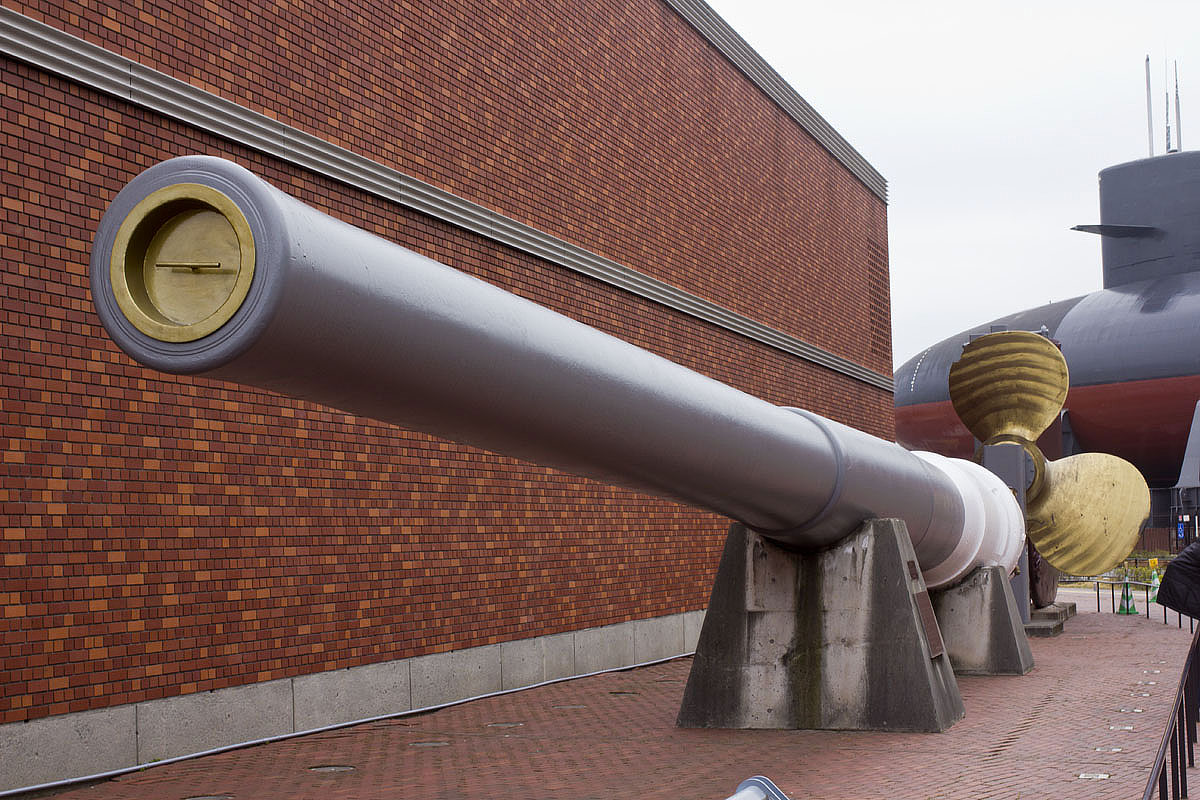
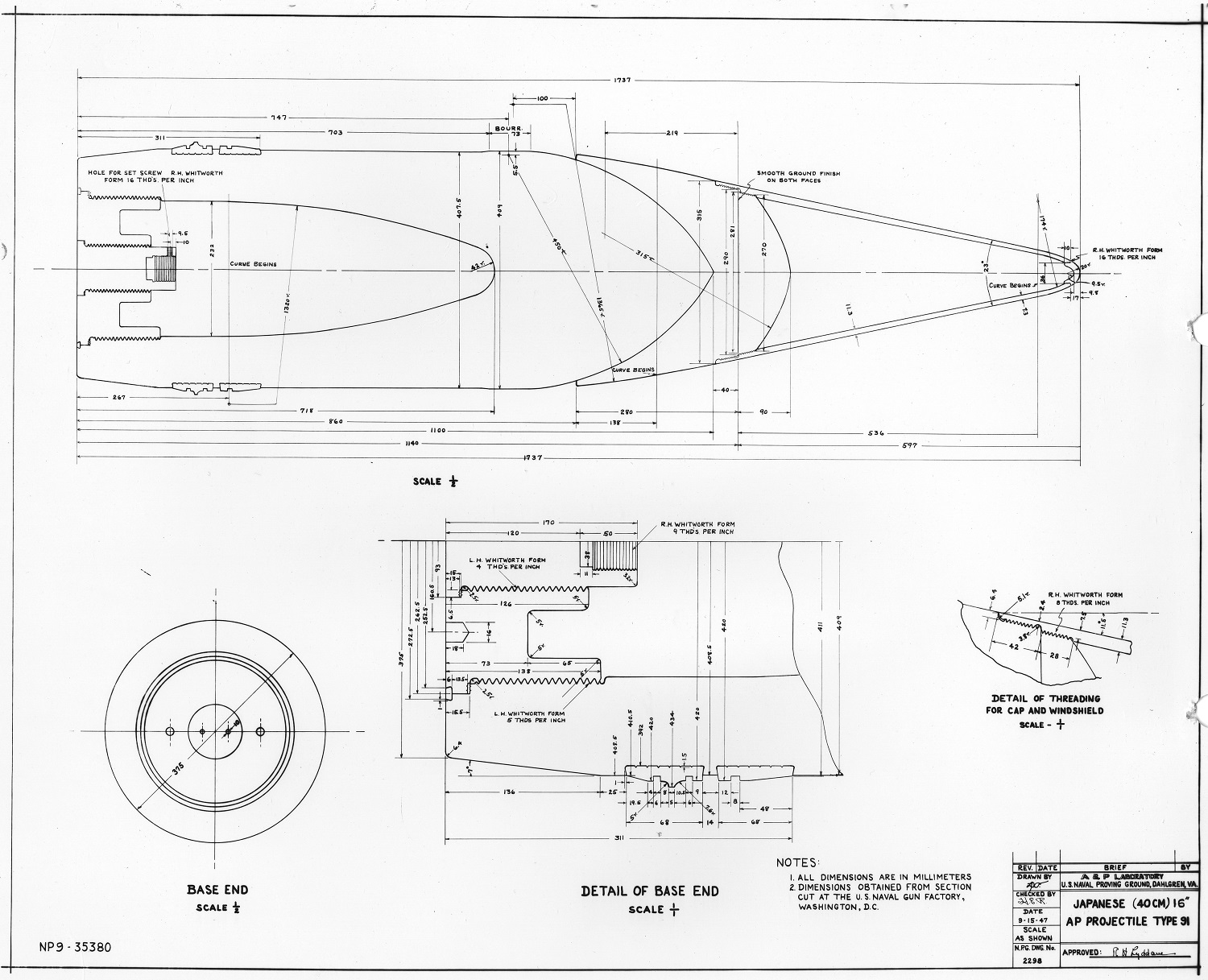
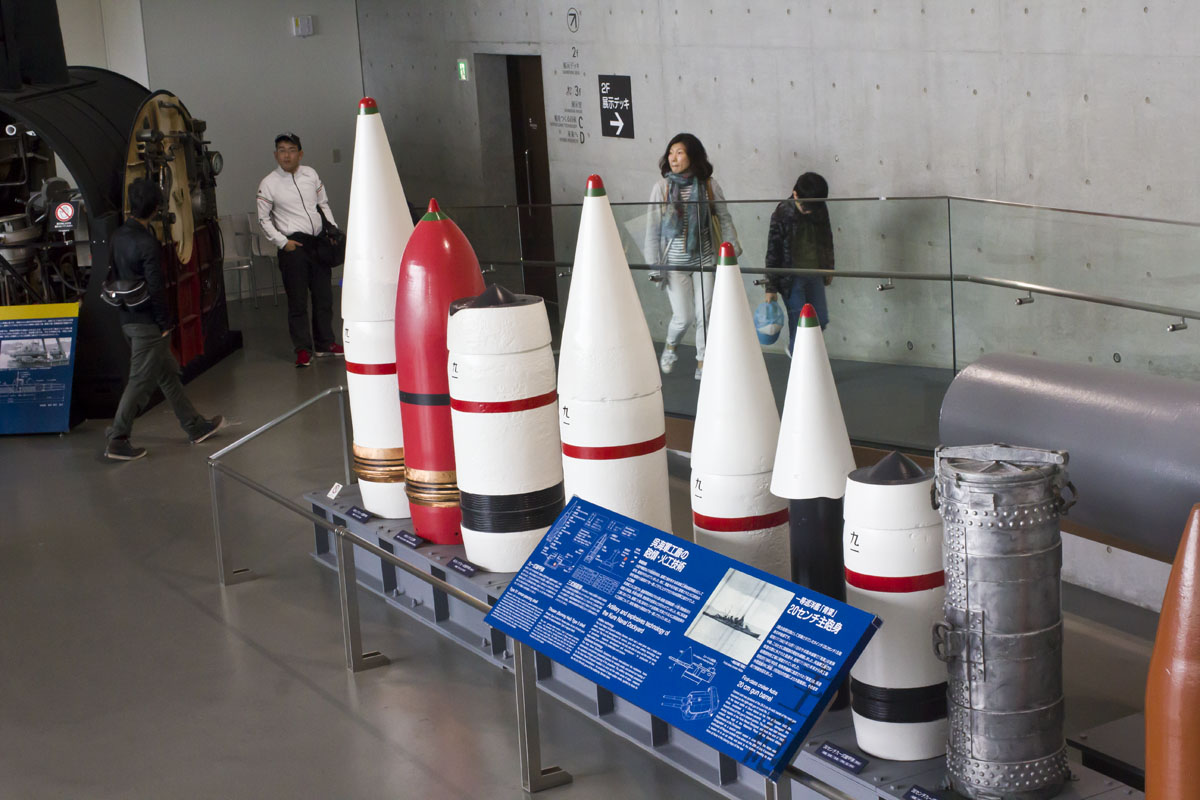
Type 91 46 cm AP shell
Type 3 46cm Shosan shell (sankaidan shell)
Type 91 46 cm AP shell body
Type 91 41cm AP shell
Type 91 36 cm AP shell
Type 91 36 cm ballistic cap
Type 91 36 cm AP shell body
Type 91 36 cm AP shell powder canister
30 cm main gun shell.
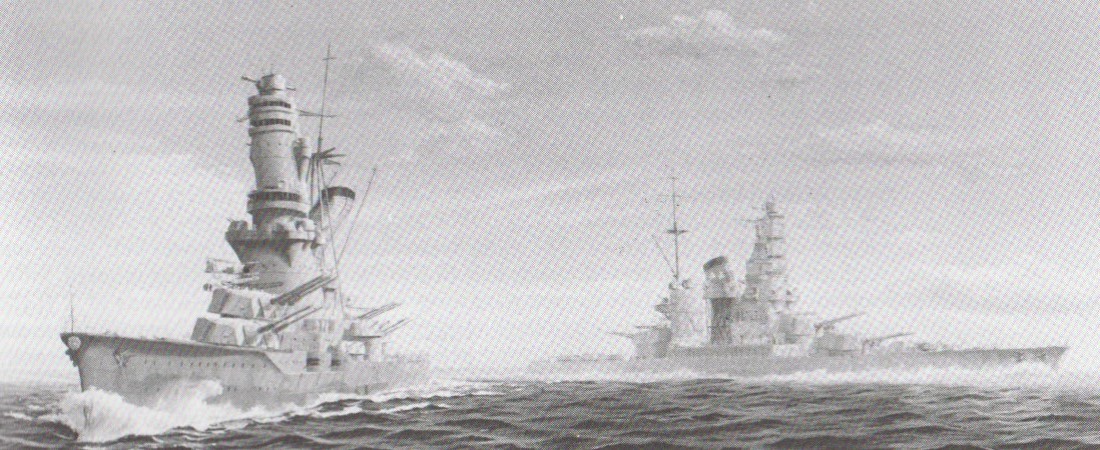
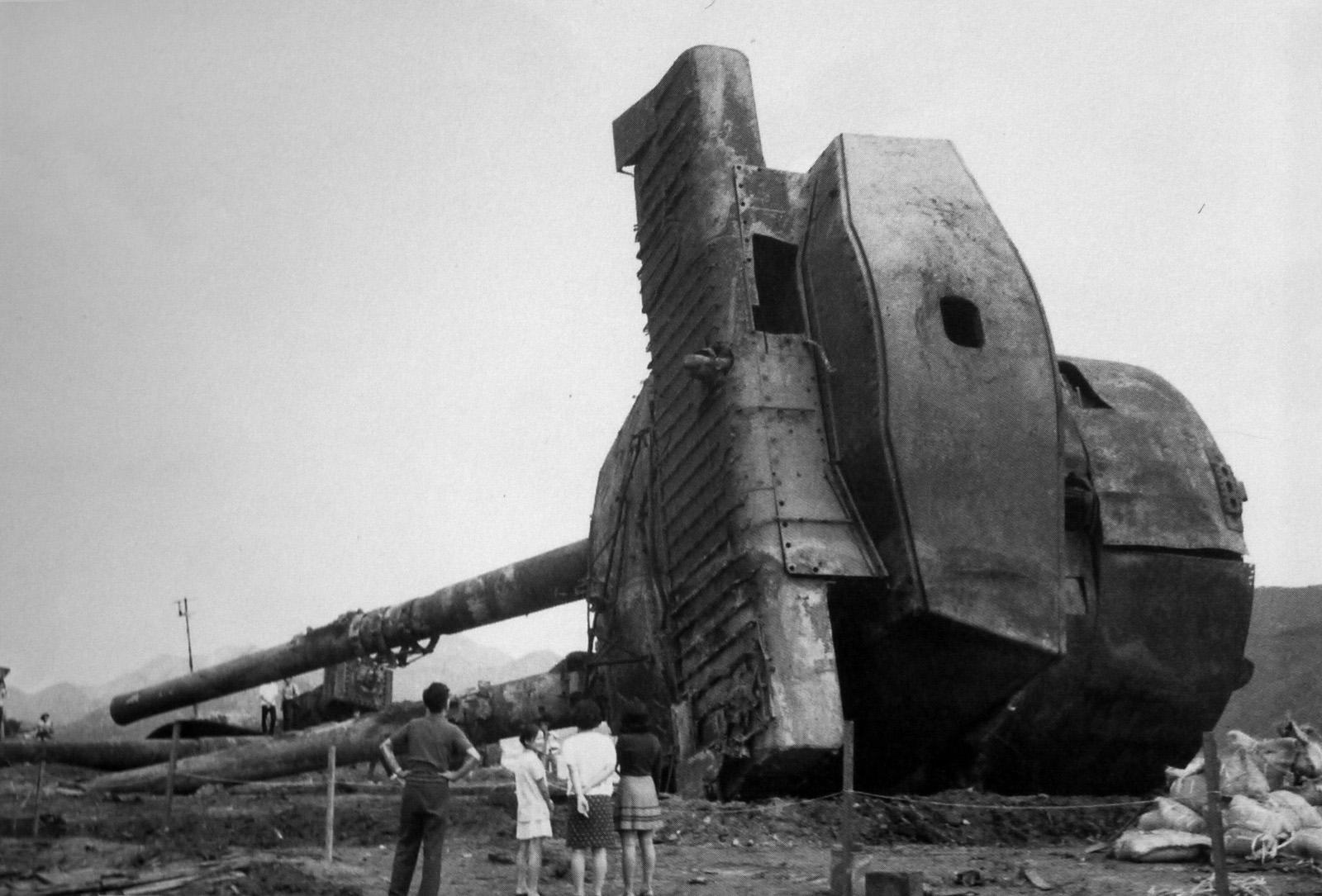
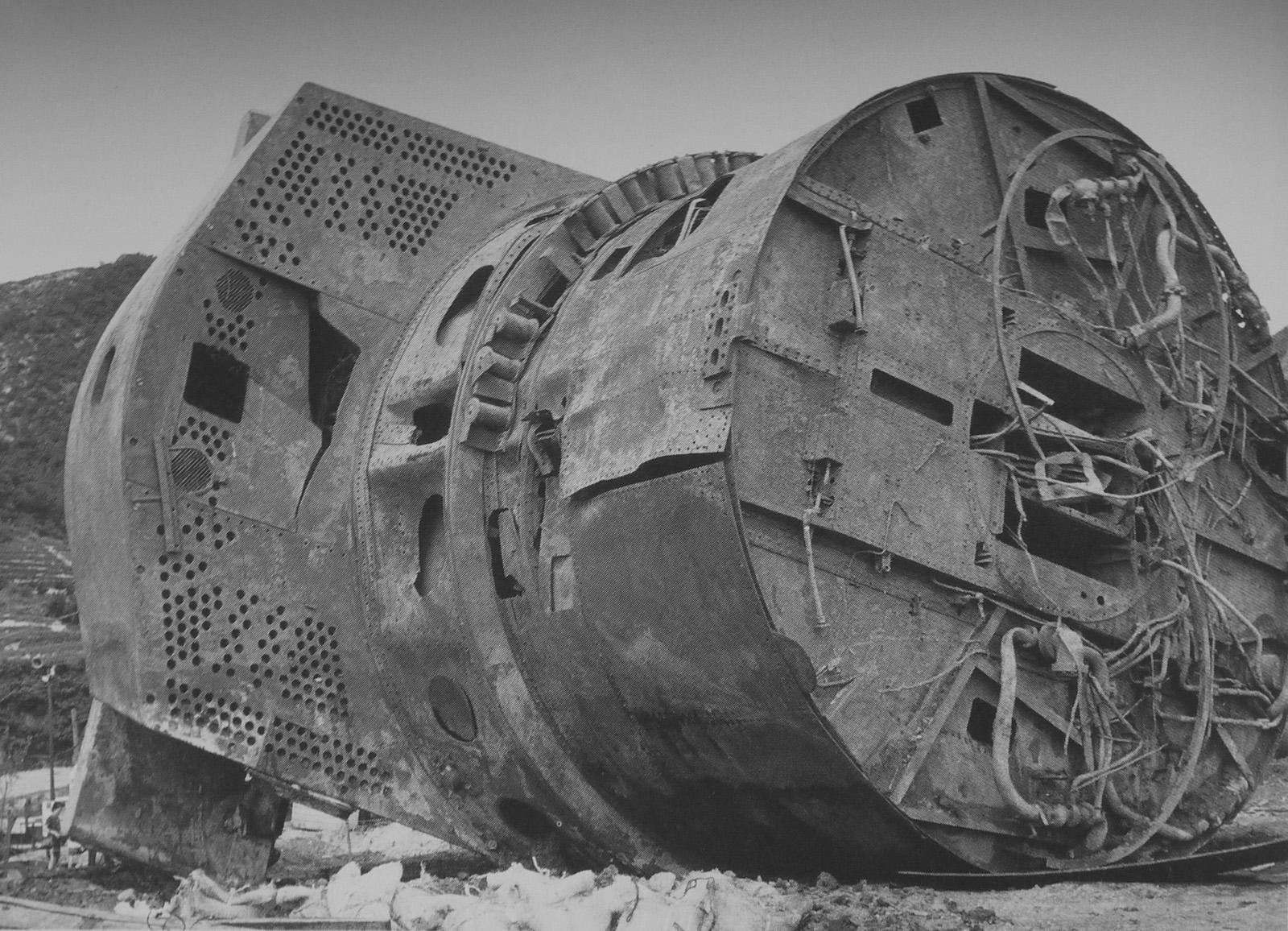
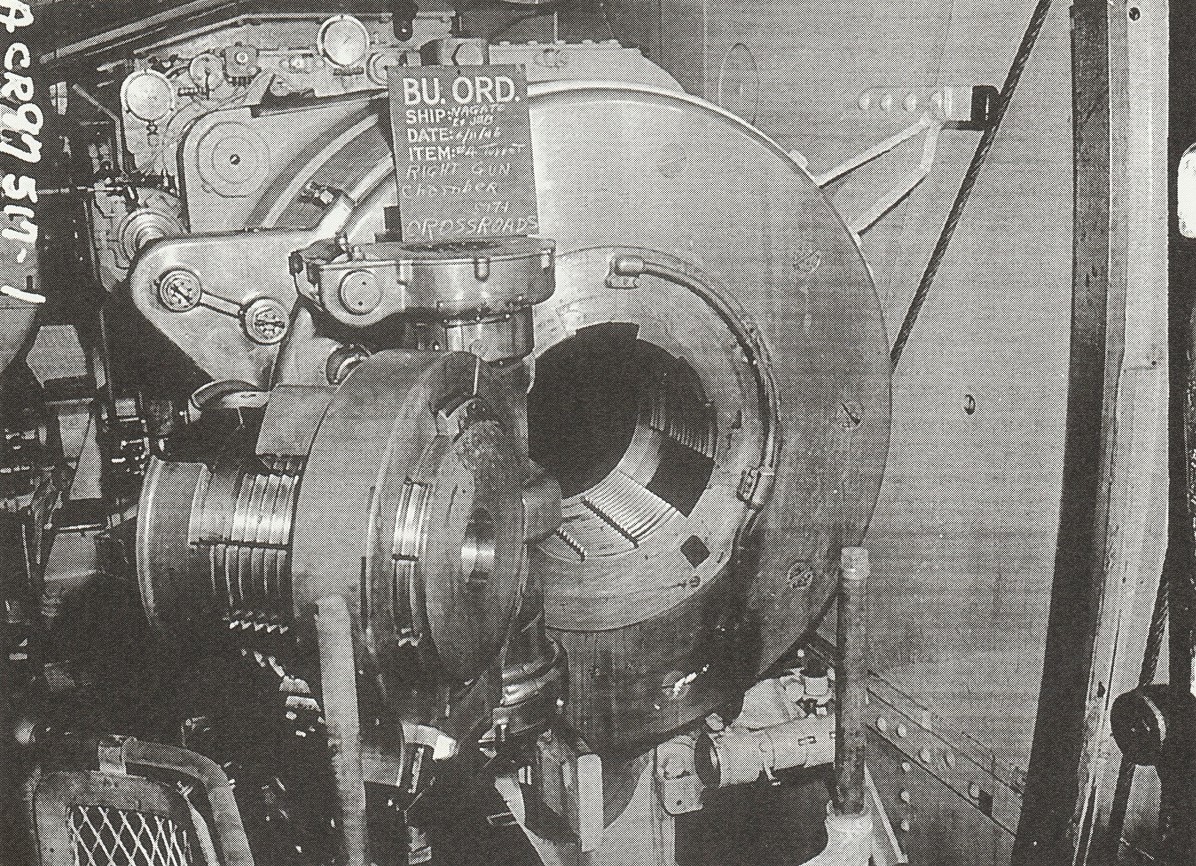
"Naval Weapons of World War Two" by John Campbell
"Battleships: Axis and Neutral Battleships in World War II" by W.H. Garzke, Jr. and R.O. Dulin, Jr.
"Zukai hachihachi kantai no shuryokukan" (Battleships and Battlecruisers of the "8-8" Fleet) by Okumoto GoÌ
"The Japanese Warships of the Pacific War" by The Koku-Fan
"Japanese Cruisers of the Pacific War" by Eric Lacroix and Linton Wells II
"The Yamato Class and Subsequent Planning" by Hans Lengerer and Lars Ahlberg
"The World Wonder'd: What Really Happened Off Samar" by Robert Lundgren
"Resurrection: Salvaging the Battle Fleet at Pearl Harbor" by Daniel Madsen
"Ship's Data IJN Warships 1868-1945 - Part 1 Battleships and Battlecruisers" by Ishibashi Takao
"All about Japanese Naval Shipboard Weapons" by Yamamoto Yoshihide and Yoshihara Ganya
---
US Naval Technical Mission to Japan report O-19: Japanese Projectiles General Types
US Naval Technical Mission to Japan report O-21: Japanese Interior Ballistics
US Naval Technical Mission to Japan report O-47(N)-1: Japanese Naval Guns and Mounts-Article 1, Mounts Under 18"
US Naval Technical Mission to Japan report O-55(N): "Defenses of Tsushima and Entrance to Sea of Japan"
US Army Report "Survey of Japanese Seacoast Artillery, 1946"
NPG Report No. 269: Ballistic Test and Metallurgical Examination of Japanese 8", 14", 16" and 18" Armor Piercing Projectiles
---
"Hawaii Operation" and "Brief History of the Naval Air Squadron" both by War History Branch, National Institute for Defense Studies
---
"Nagato Details" an unpublished paper by Sander Kindsepp
---
Iki Fortress Kurosaki Battery
---
Special help from Robert Lundgren, J. Bren and Kater Yip
19 April 2007 - Benchmark
11 May 2009 - Fixed typographical error and added photograph of Mutsu
26 June 2012 - Added sketch of shell cages and photograph of turret at Etajima
30 June 2012 - Added information about surviving guns, turret designs, armor thickness, use as coastal artillery and flashtightness of turrets
26 July 2014 - Added additional information about turrets intended for cancelled ships
11 July 2015 - Added splash color note
27 August 2015 - Added photograph of 40 cm projectiles
27 September 2015 - Added armor penetration table
06 November 2015 - Added photographs of Mutsu gun and projectiles
15 September 2016 - Merged datapage for proposed 1930s designs
10 October 2016 - Converted to HTML 5 format
13 December 2016 - Added sketch and additional data for Type 99 bomb
10 June 2018 - Reorganized notes
21 March 2019 - Added note regarding time fuzes on Common Type 0 HE
21 August 2019 - Minor changes
19 December 2019 - Added photographs of turret salvaged from Mutsu, added new gun muzzle velocity note
14 June 2020 - Added information on bombs dropped at Pearl Harbor
24 December 2020 - Added comment about Type 88 projectiles being inspected by Australian troops
31 July 2021 - Minor changes for clarity
11 November 2021 - Added photograph of first test shot
21 September 2022 - Added photographs of stern turrets of Nagato and of gun breech mechanism
18 March 2023 - Added link to Iki Fortress Kurosaki Battery (Japanese Language)
18 December 2023 - Added note regarding maximum turret train angle, sketch of Type 91 APC and fixed broken link
19 April 2024 - Added propellant information

